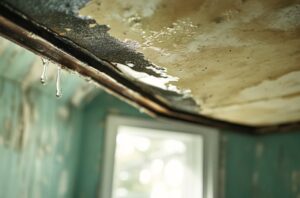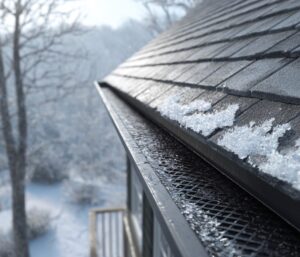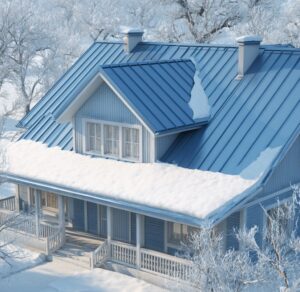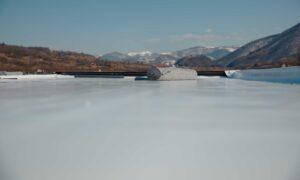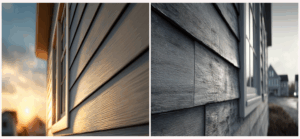You Won’t Notice the Damage—Until It’s Freezing
If you’re in Kansas City, there’s a good chance your roof took a hit this storm season. But here’s the thing: not all storm damage is obvious. Sometimes, it’s not until the first snow or freezing rain that problems start showing up—and by then, it’s already too late.
At Brewster Roofing, we’ve worked on thousands of roofs across Missouri and Kansas. Every year, we find the same pattern: hidden storm damage that went unnoticed during summer and fall turns into full-blown winter roofing problems once temperatures drop.
This post is for homeowners, property managers, and anyone wondering:
- “Is my roof still okay after those summer storms?”
- “Why does my ceiling leak only when it snows?”
- “How can I prevent bigger issues before winter hits?”
Let’s dig into how storm damage hides, why it gets worse in winter, and what to do before it costs you thousands.
Looking to schedule a roof inspection in Kansas City? Brewster Roofing can help.
Why Hidden Storm Damage Matters More Than You Think
Let’s start with the basics—what is hidden storm damage?
It’s the kind of damage that doesn’t scream for your attention. There’s no gaping hole or waterfall from your ceiling. But your roof could still have:
- Hairline cracks in shingles
- Loosened flashing
- Lifted nail heads
- Subtle granule loss from hail
None of this is dramatic in August. But fast forward to January, and that same roof can start to leak, trap ice, or even collapse under snow.
Why Kansas City Roofs Are Especially at Risk
We’re in a climate where hail in April and ice in December are both completely normal. Here’s why that matters:
- Temperature swings create expansion and contraction, making cracks worse.
- Freeze-thaw cycles push water deeper into existing damage.
- Heavy snow builds weight on compromised areas.
And because roof inspections are often skipped after storms—especially if there are no obvious leaks—damage sits quietly… until winter hits.
What You Need to Know Before Fixing Storm Damage
You can’t solve a roofing issue by jumping straight into repairs. Here’s what to think through first:
Budget
Your insurance may cover storm damage, but claims are time-sensitive. The earlier you file, the better your odds. Even small repairs are usually more affordable before winter.
Timing
Autumn fills up fast. If you wait until the first snowfall to book repairs, you might be stuck on a waiting list. Brewster Roofing installs shingles in temperatures as low as 25°F, but many companies stop work at 40°F.
Permits & Codes
Most cities in Missouri and Kansas require permits for full replacements. Multifamily and commercial properties may have additional code requirements, especially when insulation or fire ratings are involved.
Materials
For roofs prone to storm damage, we recommend:
- Impact-resistant (IR) asphalt shingles
- Stone-coated metal (like Decra)
- Underlayments built for ice and moisture barriers
We work with TAMKO, GAF, Owens Corning, and CertainTeed, all of which have products designed for midwestern climates.
Insurance
Our inspectors know how to document hidden storm damage that supports valid claims. Brewster Roofing walks you through the process, from inspection to paperwork.
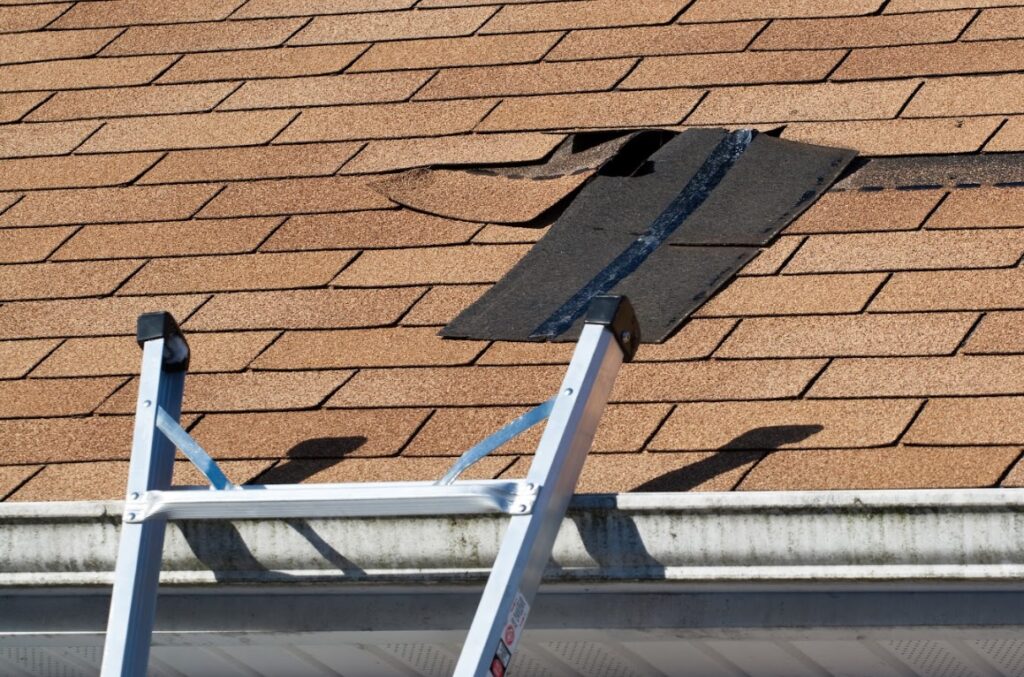
How to Catch and Fix Hidden Storm Damage Before Winter
Step 1: Get a Professional Roof Inspection
You can’t fix what you can’t see. A licensed roofer can:
- Spot granule loss, lifted shingles, and flashing issues
- Use moisture detection tools
- Check for signs of previous hail or wind damage
At Brewster Roofing, our roof inspections are free, and our inspectors are certified to find subtle issues early.
Step 2: Review Past Weather Events
If a hailstorm hit your neighborhood this summer—even if your roof looks fine—you may already have hidden storm damage. It’s worth checking with your insurance company or one of our team members to see if you’re still within the claim window.
Step 3: Make Preventive Repairs Now
Don’t wait. If there are any signs of lifting, cracking, or worn sealant, tackle those issues before the first freeze. Winter will make them worse—and costlier.
Step 4: Winterize Your Roof System
That means:
- Clearing gutters and installing guards
- Improving attic ventilation
- Making sure insulation prevents warm air from causing ice dams
These small steps can prevent major winter roofing problems down the road.
Material Choices, Warranties & Why It Pays to Plan Ahead
The Right Roofing Materials for Kansas City Winters
Every roof is different, but here’s what works well in our region:
| Material | Best For | Winter Performance |
| Impact-Resistant Shingles (IR) | Hail-prone areas | Excellent |
| Architectural Shingles | Standard homes | Good (if installed properly) |
| Metal Roofing | Heavy snow loads, long-term value | Excellent |
| Modified Bitumen (Commercial) | Flat roofs | Reliable in freezing temps |
We’re proud to be certified by every major brand we install. That keeps your warranties valid and your investment protected.
Warranties That Protect You
- TAMKO MasterShield: 30-year non-prorated coverage
- Up to 50-year manufacturer warranties on select systems
- 5-year workmanship warranty on all Brewster Roofing projects
Winter Storm Damage & Roof Inspection FAQs for Kansas City Homes
How can I tell if my roof has hidden storm damage?
You can tell if your roof has hidden storm damage by getting a professional inspection. Most damage isn’t visible from the ground. We look for small cracks, bruised shingles, lifted flashing, and signs of past hail.
Will insurance still cover damage found months after the storm?
Insurance can still cover storm damage even months after the event, as long as you’re within your policy’s filing window. That’s why we recommend scheduling a roof inspection as soon as possible.
Can I replace or repair my roof in the winter?
Yes, roof repairs and replacements can be done in winter—if done right. At Brewster Roofing, we use materials rated for cold-weather installs and can work in temps down to 25°F.
What are signs of winter roofing problems to watch for?
Signs of winter roofing problems include: ice dams, sudden leaks, high energy bills, or water stains in your attic. These often stem from earlier storm damage that wasn’t addressed.
What’s the best material to prevent winter roof problems?
Impact-resistant asphalt shingles or metal roofing are best for preventing winter roof issues. They stand up to hail, shed snow, and offer great long-term durability.
How often should I get a roof inspection in Kansas City?
Homeowners in Kansas City should get a roof inspection once a year, or after any major storm. This helps catch hidden storm damage before it becomes a costly repair.
Does Brewster Roofing offer free inspections?
Yes, Brewster Roofing offers free roof inspections for homeowners and property managers throughout Missouri and Kansas.
Don’t Let Storm Damage Surprise You This Winter
If there’s one thing we’ve learned in 60+ years of roofing—it’s that what you don’t see can hurt your home. A roof that looks fine in the fall can lead to major winter roofing problems if hidden storm damage isn’t found and fixed in time.
Brewster Roofing is certified, insured, and trusted across Kansas City and beyond. We’ve replaced over 15,000 roofs, and we know what to look for—before your attic fills with water or your insulation freezes solid.
Schedule your free Kansas City roof inspection today, and let’s make sure winter doesn’t catch you off guard.


